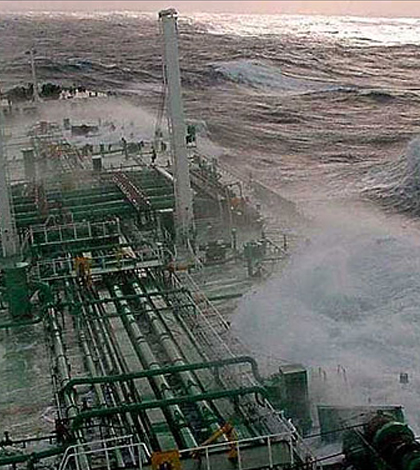Modeling Pinpoints Conditions For Rogue Ocean Waves

Ship hit by a rogue ocean wave. (Credit: National Oceanic and Atmospheric Administration)
Rogue ocean waves have been difficult to predict for some time. And that is not entirely without reason — the ocean is fickle after all, and the rogue waves, capable of reaching heights of more than 80 feet in less than a minute, can come seemingly out of nowhere. A recent modeling effort completed in part by scientists at the Georgia Institute of Technology has reduced the difficulty in predicting them.
First steps in the effort were to nail down how the waves appear to form in the first place. This was done by analyzing three rogue waves that took place near oil platforms in the North Sea over the course of a decade.
Essentially, researchers found that ocean waves, in rare circumstances, can arrive at a single point in an organized way, leading to the formation of the rogue waves that reach incredible heights. But not just any wave will do. The waves tended to have rounded troughs and sharp peaks that came because their water was surging upward against the pull of gravity.
From there, investigators modeled circumstances that converged to form each of the three waves, nailing down the effects of nonlinearity in amplifying waves that has eluded researchers for some time.
Top image: Ship hit by a rogue ocean wave. (Credit: National Oceanic and Atmospheric Administration)





0 comments